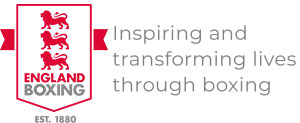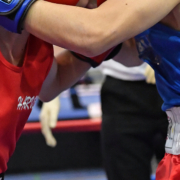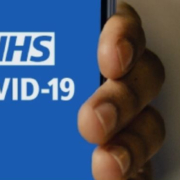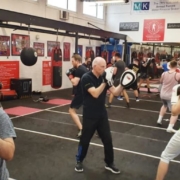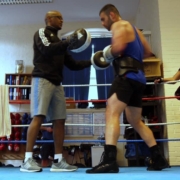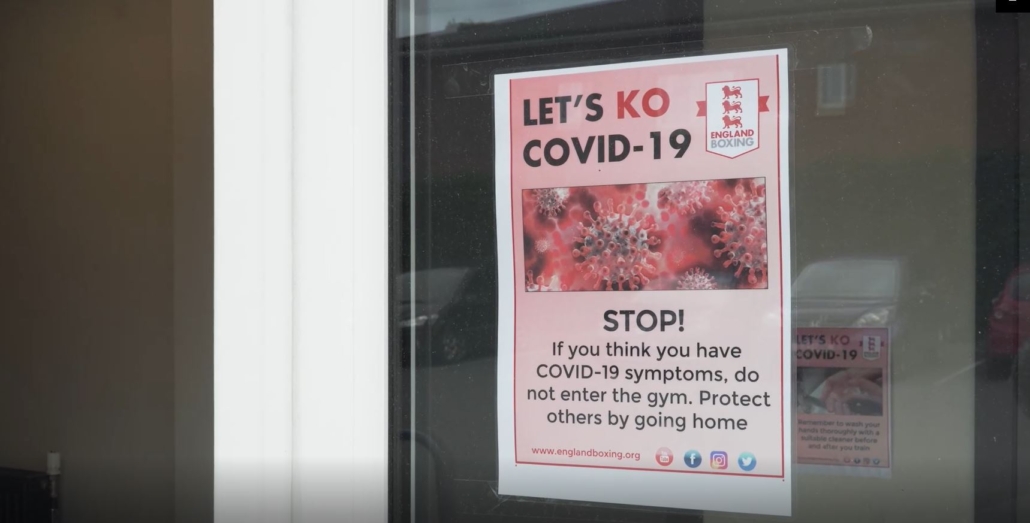
Q&A on reopening of indoor gyms and facilities
July 16, 2020 | by Matt Halfpenny
England Boxing has put together a Q&A on the reopening of indoor gyms and facilities to answer some of the most burning questions that have come in from clubs, coaches and boxers.
Clubs and facilities are permitted to open their doors from Saturday 25th July, providing they adhere to the guidelines and regulations that have been set out.
Introduction
Please be assured that England Boxing’s number one priority continues to be the safety and wellbeing of our clubs, members, volunteers and staff. The organisation will continue to communicate regularly and directly with our clubs and members, and issue further guidance and supporting documentation as it becomes available.
Unfortunately, it is likely that the full return of amateur boxing will occur later than many other sports. It is essential, however frustrating this is, that we follow the government regulatory advice, so we remain as safe as possible and also as indicated in the government advice there is a legal obligation to do so.
It is also our view that, wherever possible, training activity should take place outside in order to reduce the chance of infection.
The specific government advice can be found here.
We understand that some of the requirements will be in some cases difficult to implement. It remains our opinion that wherever possible, training activity should take place outside, where the risks are significantly reduced.
The government advice states:
COVID-19 is a public health emergency. Everyone needs to assess and manage the risks of COVID-19, and in particular businesses should consider the risks to their workers / volunteers and customers. As an employer or as an operator of sports or leisure facility, you also have a legal responsibility to protect workers, volunteers, customers and users from risk to their health and safety. This means you need to think about the risks they face and do everything reasonably practicable to minimise them, recognising you cannot completely eliminate the risk of COVID-19.
This applies to boxing clubs.
Clubs should also be aware that the following guidelines are in addition to the usual England Boxing Club Health and Safety and Safeguarding Policies and Procedures.
Resources
England Boxing Return to Gyms Guidance document.
Guidance and forms for Risk Assessment and Test and Trace.
Downloadable Return to Gym posters.
Q&A
1. How do you work out the distance required per person and therefore the capacity on an indoor facility? What is the difference between the 3.05m and the 2m social distance figures, both mentioned in the guidance document?
The number of people permitted in an indoor facility at the same time is calculated by first measuring the area of all available rooms including gym area, changing rooms, toilets, office space etc and then dividing it by 100sqft (9.29sqm). For example, if a gym had 3,000sqft (278.7sqm) of space in total, then, divided by 100sqft (9.29sqm), it would allow for 30 people to enter at any given time.
The 100sqft (9.29sqm, or the equivalent of 3.05m x 3.05m) per person figure is for working out the capacity of the building. The social distancing requirement between each person is 2m.
As is the case outdoors, it is a requirement for all people using an indoor gym or facility to train to remain at least 2m apart in all directions allowing for movement to observe social distancing.
This is especially important at pinch points and close to entrances and exits.
2. In the government document it talks about the need for mechanical ventilation… if your gym doesn’t have mechanical ventilation can it still comply with the government’s regulations?
There is no obligation to have mechanical ventilation, providing a club has followed capacity guidelines around maximum occupancy (see above). That said, the advice is to ventilate the venue through opening doors and windows (wherever possible) as much as possible.
3. Do coaches and/or boxers need to wear face masks or are they optional?
At this stage it is up to the coaches to decide. If a social distance of 2m in all direction is observed at all times, then it is currently deemed OK not to wear them (although this could change in the future as government instructions dictate). As mentioned previously, it is even better for safety and to cut the risk of transmission to continue to train outdoors. For those exercising its not recommended unless directed by a doctor. See advice below.
The government advice is a follows:
There are some circumstances when wearing a face covering may be marginally beneficial as a precautionary measure. The evidence suggests that wearing a face covering does not protect you, but it may protect others if you are infected but have not developed symptoms.
A face covering can be very simple and may be worn in enclosed spaces where social distancing isn’t possible. It just needs to cover your mouth and nose. It is not the same as a face mask, such as the surgical masks or respirators used by health and care workers. Similarly, face coverings are not the same as the PPE used to manage risks like dust and spray in an industrial context. Supplies of PPE, including face masks, must continue to be reserved for those who need them to protect against risks in their workplace, such as health and care workers, and those in industrial settings like those exposed to dust hazards.
It is important to know that the evidence of the benefit of using a face covering to protect others is weak and the effect is likely to be small, therefore face coverings are not a replacement for the other ways of managing risk, including minimising time spent in contact, using fixed teams and partnering for close-up work, and increasing hand and surface washing. These other measures remain the best ways of managing risk in the workplace and government would therefore not expect to see employers relying on face coverings as risk management for the purpose of their health and safety assessments.
Wearing a face covering is optional and is not required by law, including in the workplace. If you choose to wear one, it is important to use face coverings properly and wash your hands before putting them on and taking them off. You should be prepared to remove your face covering if asked to do so by police officers and staff for the purposes of identification. Please be mindful that the wearing of a face covering may inhibit communication with people who rely on lip reading, facial expressions and clear sound.
Employers should support their workers in using face coverings safely if they choose to wear one. This means telling workers:
- Wash your hands thoroughly with soap and water for 20 seconds or use hand sanitiser before putting a face covering on, and after removing it
- When wearing a face covering, avoid touching your face or face covering, as you could contaminate them with germs from your hands
- Change your face covering if it becomes damp or if you’ve touched it
- Continue to wash your hands regularly
- Change and wash your face covering daily
- If the material is washable, wash in line with Manufacturer’s instructions. If it’s not washable, dispose of it carefully in your usual waste
- Practise social distancing wherever possible
You can make face-coverings at home and can find guidance on how to do this here.
All forms of face coverings may restrict breathing efficiency and should not be used during exercise except on specific advice from a physician.
4. When can we spar or do pads?
It’s too early to say at the moment, but boxing faces a similar situation to other combat sports and we at England Boxing continue to push the department for Digital, Culture, Media and Sport (DCMS) on when this will be permitted.
5. Why can’t we spar or do pads, even with masks?
The government advice states that social distancing must be maintained wherever possible and the rule is 2m in all directions unless there are extenuating circumstances. The first rule / question to consider from a government perspective, in light of the current Pandemic, is ‘if you can’t do it further than 2m apart, does it need to be done?’ That makes it hard to start off with. Spotters in gyms, for instance, are not allowed to help with bench pressing weights.
If you then have to consider mitigation to go less than 2m, then wherever possible this should be back to back or side by side, or barriers or screens put in place, which obviously cannot apply to pad work. The levels of exertion and heavy breathing that is caused by pad work also increases the risk at less than 2m.
Lastly, and perhaps the key issue, is the use of the masks and the benefits are not clear; it’s unclear if it prevents infection and as detailed above not recommend for exercise. The increased exertion and heavier breathing is more likely to increase the ‘blow effect’ and thereby increase the risk. We also have to factor in, in some cases, the specific risk to some of our members. See above.
6. If two members of the same household (for example, father and son) attend an indoor gym session, can they pad each other, providing they maintain social distancing from other members?
Yes they could, but it is suggested they explain the situation to the other boxers before starting the session so they understand why they are doing it when others can’t. For the avoidance of doubt, it should also be noted that the pairing counts as two people when making up the numbers in attendance, not one.
7. With social distancing measures in place, what happens should a participant need first aid?
If someone gets injured, then its preferable that a member of their household treats them, unless it is an emergency, in which case social distancing can be compromised. On other occasions, those treating the individual should wear appropriate PPE and ensure others keep their social distance.
8. If a boxer tests positive for COVID-19, does the coach and other four boxers (from a bubble of 6) need to self-isolate for 14 days? Does the gym need to close for a number of days to deep clean? If there were three bubbles training at the same time, do the other two bubbles have to self-isolate, even though they were not in the bubble of the confirmed case?
Potentially, the other boxers could have to self-isolate, but it would depend on the specific circumstances, and they would need to follow the advice provided by the Test and Trace advisors. This scenario underlines why social distancing is so important.
The government advice states the following:
If you receive a request for information from NHS Test and Trace, this does not mean that you must close your establishment. NHS Test and Trace will, if necessary, undertake an assessment and work with you to understand what actions need to be taken.
Depending on the circumstances and the length of time that has elapsed, this could include arranging for people to be tested, asking them to take extra care with social distancing and/or – in some circumstances – asking them to self-isolate. NHS Test and Trace will give you the necessary public health support and guidance. Your staff will be included in any risk assessment and NHS Test and Trace will advise them what they should do.
If there is more than one case of COVID-19 on your premises, you should contact your local health protection team to report the suspected outbreak.
9. Are outdoor training sessions still limited to 6 people?
England Boxing has been advised (16th July) that as a result of guidance for summer clubs /activities by the Department of Education, England Boxing Clubs are now permitted outdoors during the school summer holidays to have the following:
Groups of up to 15 children / young people under 18, with at least 1 coach and in accordance with numbers stipulated in our coach / volunteer safeguarding guidance for supervision numbers, can meet up for organised training session outdoors.
This is providing the government advice which can found here is followed.
This is namely:
- A risk assessment has been undertaken.
- That the 2m social distancing requirements in all directions are met.
- That hygiene (including handwashing, use of hand sanitiser) and touch points and equipment cleaning protocols / advice are followed.
- Boxers come already changed and shower at home.
- Sufficient time is allowed for changeover of the groups.
- The advice and the protocols are communicated to the parents / children / young people ahead of the session.
- They do not attend if feeling unwell or have COVID-19 symptoms.
- The groups are kept as consistent as possible.
- All our previous advice and England boxing Regulations and safeguarding requirements are also adhered to.
- The aim is also to stop mixing in larger groups, so multiple groups should be kept a significant distance apart and not mix or share equipment.
- Additional detail from the government is below.
- minimising contact with individuals who are unwell by ensuring that those who have coronavirus (COVID-19) symptoms, or who have someone in their household who does, or who have been advised by NHS Test & Trace to self-isolate do not attend your setting
- keeping facilities and equipment clean – touch points (e.g. handrails and gates) should be particular areas of focus for increased cleaning
- using signs, posters and regular reminders to build awareness of good handwashing technique, the need to increase handwashing frequency, avoid touching your face, and to cough or sneeze into your arm rather than your hand
- providing more waste facilities and more frequent rubbish collection
- providing hand sanitiser in multiple locations
- using disposable paper towels in handwashing facilities, where possible
- minimising use of portable toilets
- setting clear use and cleaning guidance for toilets to ensure they are kept clean and social distancing is achieved
For the avoidance of doubt, this advice only apples outdoors. Indoor capacity numbers should be based on the guidelines provided on the return to boxing document, namely one person per 100sgft and 2m distance for individuals in all directions, and not before 25th July.
If there any queries on this, then please email enquiries@englandboxing.org or contact your Club Support Officer.
10. Will we still be insured to do outside training once indoor gyms and facilities reopen?
Yes, providing guidelines for training sessions, including government advice and England Boxing regulations and safeguarding rules, are adhered to, including staying socially distanced by at least 2m, cleaning down equipment before and after use etc.
11. Does the no pad work rule also apply to a one-on-one pad work session held outdoors, where the risk is greatly reduced? Would the use of boxing precision sticks in an outdoors setting be allowable as the distance between coach and boxer is greater?
Currently, unless within a single household, no form of pad work is permitted indoors or outside, as it brings you within 2m.
12. When do you think competitive boxing will resume?
It’s too early to say, but will be dependent on the easing of social distancing requirements in the first instance to allow pad work and sparring.
13. When competitive boxing does resume, will it be with a socially-distanced audience, even for club shows?
It’s too early to tell, but almost certainly. The reality is that the first stage of competitive boxing will most like be behind closed doors and with extremely limited access to a venue. We understand that this will most likely make it financially unviable, but it will be the only way to ensure events will meet public health requirements in light of COVID-19. Obviously, as soon as this changes, we will update the advice accordingly.
14. With gyms now reopening, when will England Boxing’s courses (Coaching, Safeguarding etc) be back up and running?
Some courses, such as Box In Mind and KO Racism, are currently being delivered online, with details here. The situation regarding face to face courses is currently being reviewed, but will not be before September.
15. How is the mental wellbeing of members being protected?
Guidance on mental health and where to seek help and advice is available on the England Boxing ‘Stay Active During COVID-19’ web page here under the heading ‘Mental Health’.
Further queries
Please email enquiries@englandboxing.org or contact your local Club Support Officer, whose details can found here.
